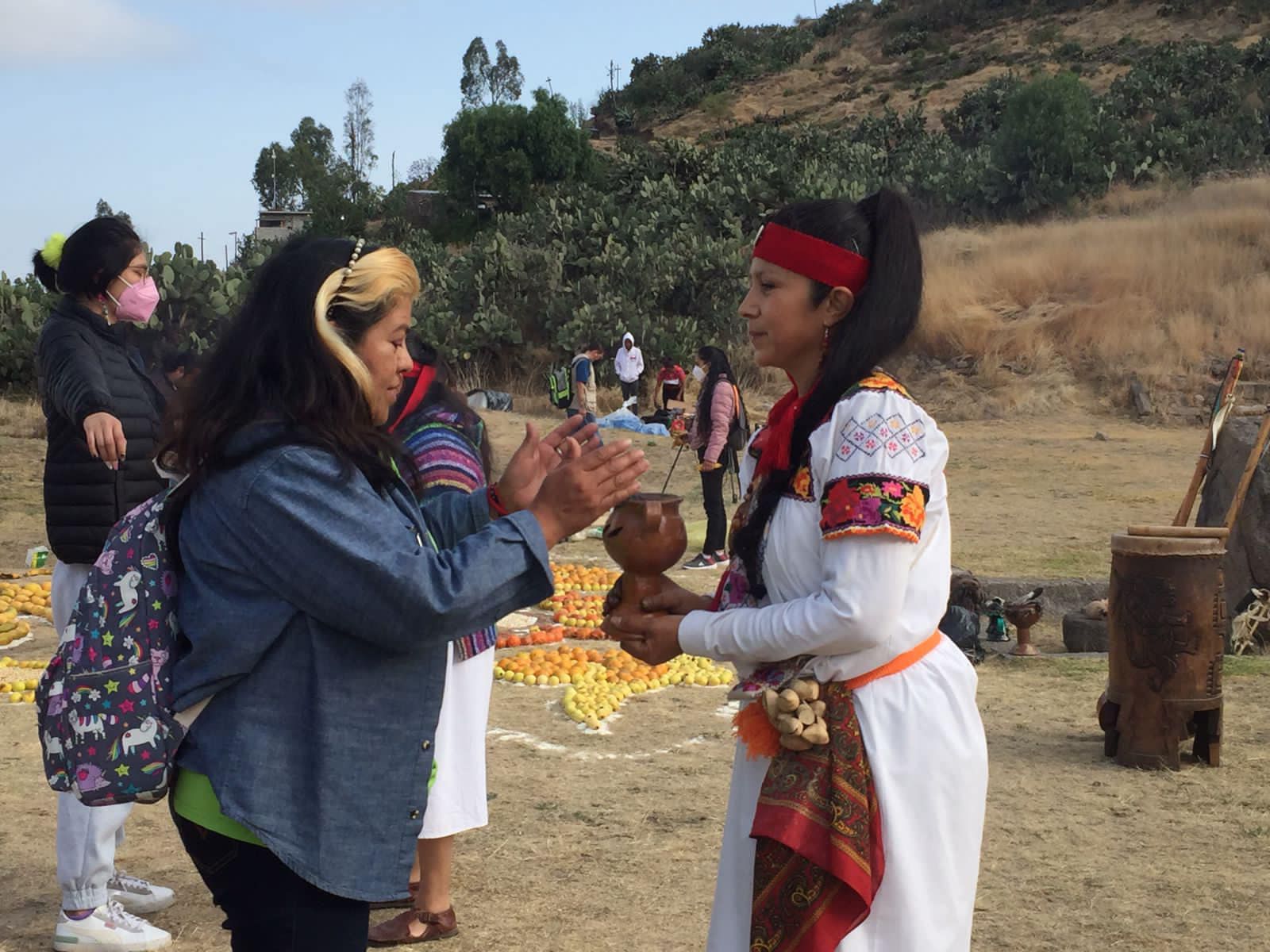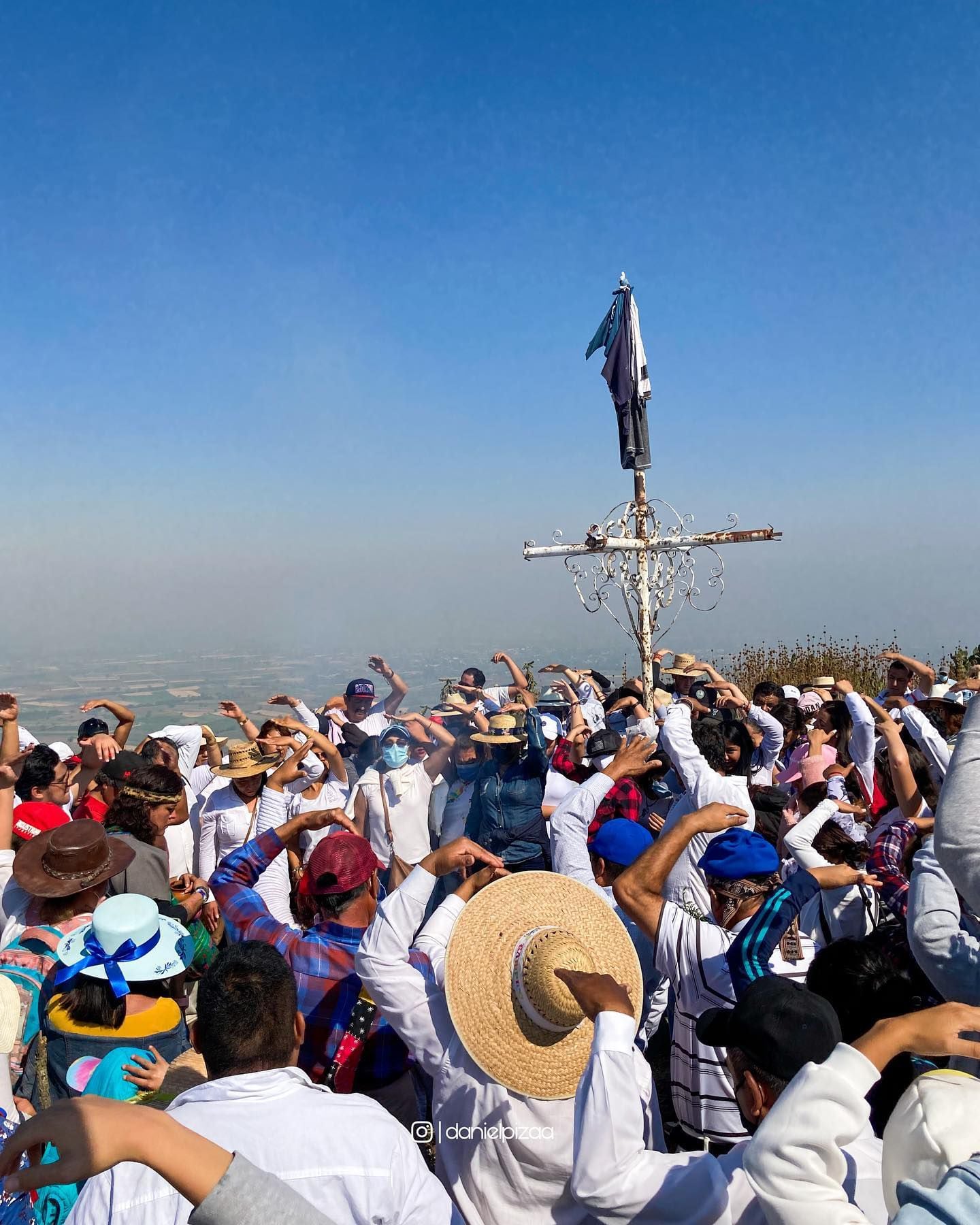
The spring equinox was recorded on March 20, at 09:33 AM (Central Mexico Time), this natural phenomenon indicates the moment when the Sun crosses from the southern hemisphere to the north. This means that the sun will take the same number of hours above the horizon as it does below it; that is, the length of day and night are balanced in both hemispheres (in other words, day and night have the same duration in most of the world).
It is considered to serve as a transition between winter and spring as the angle of the sun faces the equator and allows all parts of the Earth to receive the same amount of light and darkness during a day.
This phenomenon attracts a multitude of people to different archaeological and tourist areas in Mexico to “welcome” spring and “recharge” for 2022. Thus, dressed in white, wearing caps, hats and even incense, hundreds of people gathered in different places to perform “rituals” associated with this day.
It should be added that although experts reiterate that people cannot perceive the crossing of the sun from the southern hemisphere to the north, it is possible to observe how this process manifests itself in pyramids, palaces and other Mesoamerican architectural structures that align with it, either at sunrise or sunset during the day.

One of the best known examples is the one that takes place in the Temple of Kukulkán, in Chichen Itza, where you can observe the famous descent of the feathered serpent from an hour before sunset, during the spring equinox. It should be added that although this event does not occur only on this date (it occurs days before and after) it is popularly associated with the equinox.
Another case is the Caritas Temple, in Cempoala, Veracruz, not only does it have murals that represent the Sun, the Moon and Venus, it is built in such a way that during the equinox the sun rises aligned with the pyramid.
Similarly, in the Archaeological Zone of Xochicalco, Morelos, there are several ball courts; in one there are markers, which are two stone rings embedded in an equal number of parallel walls. They are oriented towards the sunset on the day of the equinox, in such a way that you can see how it “gets” in the center of both.

Due to the health contingency and isolation as a containment measure to prevent a greater number of COVID-19 infections, in 2020 and 2021, many of the precincts that were visited by tourists to “recharge energy” remained closed.
This year, after reporting that Teotihuacán would be closed on March 20 and 21, the Ministry of Culture, through the National Institute of Anthropology and History (INAH), issued in a statement on Friday, March 18, that the Archaeological Zone of Teotihuacan, in the State of Mexico, will be open to public on 19, 20 and 21 March.
It should be noted that one of the most popular sites for this date is Teotihuacán. For this reason, dozens of people took the opportunity to attend the traditional ceremony and “recharge their energy” with the arrival of spring.
It should be reiterated that the spring equinox takes place between March 19 and 21 of each year, are called the Spring Equinox in the Northern Hemisphere, and the Autumn Equinox in the Southern Hemisphere, and in both marks the start of a new season.
KEEP READING:
Últimas Noticias
Debanhi Escobar: they secured the motel where she was found lifeless in a cistern
Members of the Specialized Prosecutor's Office in Nuevo León secured the Nueva Castilla Motel as part of the investigations into the case

The oldest person in the world died at the age of 119
Kane Tanaka lived in Japan. She was born six months earlier than George Orwell, the same year that the Wright brothers first flew, and Marie Curie became the first woman to win a Nobel Prize

Macabre find in CDMX: they left a body bagged and tied in a taxi
The body was left in the back seats of the car. It was covered with black bags and tied with industrial tape
The eagles of America will face Manchester City in a duel of legends. Here are the details
The top Mexican football champion will play a match with Pep Guardiola's squad in the Lone Star Cup

Why is it good to bring dogs out to know the world when they are puppies
A so-called protection against the spread of diseases threatens the integral development of dogs




